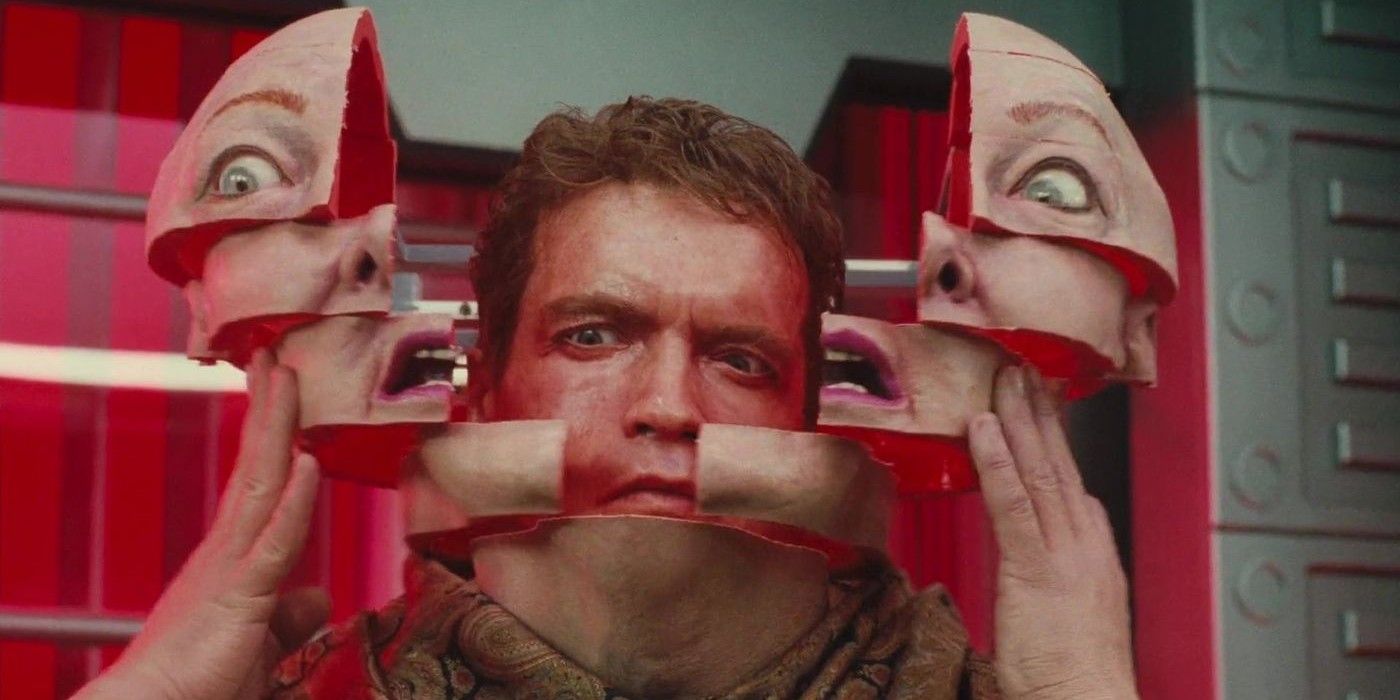Arnold Schwarzenegger's 1990 sci-fi action film Total Recall recently had its special effects broken down and critiqued by modern VFX artists. Total Recall is based on a short story by Philip K. Dick called We Can Remember It For You Wholesale. The final film took many liberties with the source material, but a beloved classic was born in doing so. The plot of Total Recall follows Schwarzenegger's Douglas Quaid, a man who has virtual vacation memories of Mars implanted into his head. However, something goes wrong during the procedure, and Quaid finds himself pulled into the fight for Mars against the evil Cohaagen without knowing if any of it is real.
Schwarzenegger shared the screen with Sharon Stone, Ronny Cox, Michael Ironside, and Dean Norris. Paul Verhoeven directed the film, and it was his follow-up to 1987's Robocop. Robocop also featured some impressive special effects for the era, and that's just what Total Recall would need, so Verhoeven was a perfect choice to helm the film. The effects that brought Total Recall to life were revolutionary for the time, as it featured large-scale miniatures and practical effects while also incorporating early CGI in some scenes. The final result was a mix of unique elements that allowed Total Recall to wow audiences on its way to becoming the 6th highest-grossing film of 1990.
In a new YouTube video from The Corridor Crew, VFX artists Wren and Niko sit down with Seth Rogen to discuss effects in film. Their discussion on Total Recall begins with some early digital effects utilized in the body scan scenes that show people walking behind a wall that then acts as an X-ray machine, displaying each person's skeletal structure. Next, the hosts break the shot down to highlight the excellent matching of the real actors to the digital skeletons while also talking about the rotoscoping used to accomplish the shot. They follow this up by talking about another shot that married matte paintings and miniatures to show the landscape of Mars. Check out the video below to see all the movies they broke down and the discussion on Total Recall, which begins around the 11:30 mark.
Click here to view the video on YouTube.
While talking about the large-scale miniatures used for Total Recall, Rogen mentions that studios often deny requests for such things when making films now, as the cost is just too high. Total Recall was one of the last big productions to rely so heavily on the use of miniatures until, as they noted in the video, filmmakers like Christopher Nolan were given the budgets to do just that. Nolan is notorious for his love of practical effects and miniatures in films like The Dark Knight and Interstellar. However, as Rogen points out, Nolan has access to a much larger budget than any of Rogen's films.
One of the interesting points made by Rogen is that studios assume old effects look bad now, which isn't always the case. Many practical effects from early films still look fantastic today, like the werewolf transformation in An American Werewolf in London or even the married practical and digital effects from 1993's Jurassic Park. Because of studio concerns over budgets, digital effects tend to get used more in modern productions to save money. Even 2012's Total Recall remake leaned heavily into digital effects over the practical ones of the original. While some audiences may point to the original Total Recall's effects looking dated now, they were a masterwork of their time. Total Recall still holds a special place with audiences today, and much of that is thanks to its impressive and unique special effects work.
Source: The Corridor Crew

